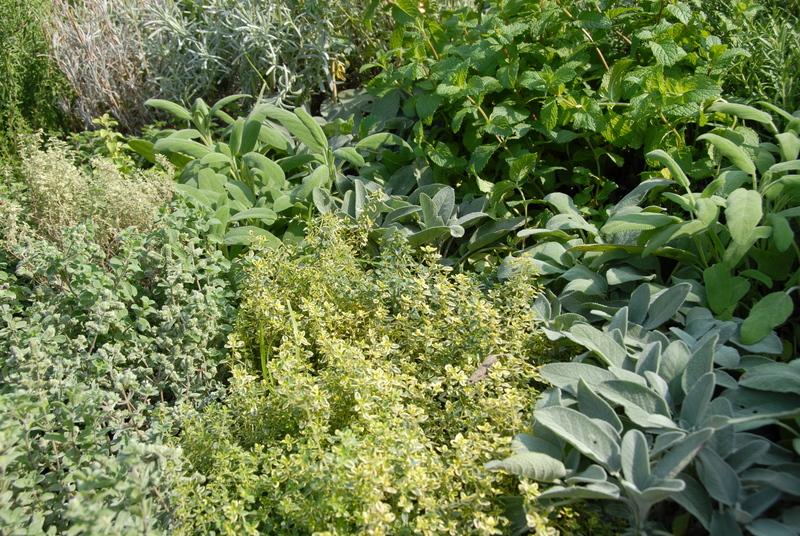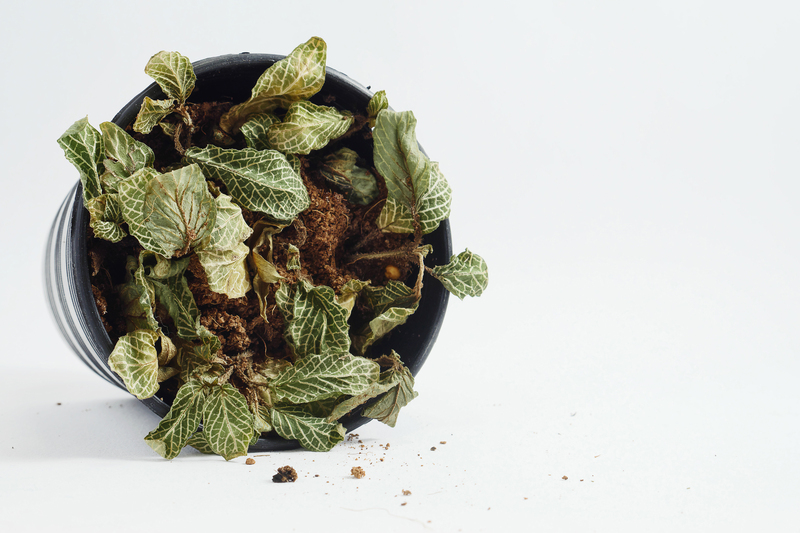Sustainability Starts at Home: Gardening Against Climate Change
Posted on 05/06/2025
Sustainability Starts at Home: Gardening Against Climate Change
As the world faces the unprecedented challenges of global warming and environmental degradation, individuals are increasingly searching for actionable ways to make a positive impact. One remarkable and often underestimated solution can be found just beyond your doorstep: gardening for sustainability. This article explores how anyone can become a steward of the planet by cultivating a climate-resilient, eco-friendly garden right at home.
Understanding the Connection: Home Gardening and Climate Change
Climate change mitigation often seems like an epic battle fought by governments and international organizations. However, the foundations for real, lasting change can begin in our backyards. Here's how sustainable gardening at home serves as a practical weapon against the climate crisis:
- Carbon sequestration: Plants absorb CO2 and produce oxygen, directly reducing greenhouse gases.
- Biodiversity support: Thoughtful gardens provide habitat for pollinators and wildlife, preserving vital species.
- Food miles reduction: Growing food at home slashes the emissions from transporting produce across continents.
- Soil health improvement: Gardens enriched with organic matter fight erosion and lock away carbon.
- Resource efficiency: Smart gardening practices minimize water use, synthetic fertilizers, and waste.
Home gardening for sustainability is more than a trend--it's a powerful statement that every household can be part of the solution to climate change.

Key Principles of Climate-Smart Gardening
To contribute meaningfully to climate action through your garden, it's essential to adopt sustainable, regenerative techniques. Below are the pillars of an eco-friendly gardening approach:
1. Choose Native and Climate-Resilient Plants
Native species are acclimated to your region's conditions, making them naturally more resilient to local diseases, pests, and weather extremes. When you plant native flora, you minimize the need for artificial irrigation, pesticides, and fertilizers.
- Supports pollinators: Native flowers and shrubs attract bees, butterflies, and birds.
- Reduces maintenance: Less need for inputs or intervention.
- Builds ecosystem resilience: Creates a balanced, adaptable micro-environment.
2. Foster Healthy Soil for Long-Term Sustainability
Soil is a powerful ally in the fight against climate change, acting as a carbon sink. By nurturing living soil, you improve its structure, water-holding capacity, and biodiversity.
- Composting: Convert kitchen scraps and garden waste into organic matter to feed the earth.
- Mulching: Cover bare soil with leaves or straw to prevent erosion and feed beneficial organisms.
- No-dig/No-till gardening: Limit soil disturbance to maintain the complex web of life underground.
3. Reduce Water Usage and Harvest Rainwater
Sustainable gardening finds ingenious ways to limit reliance on precious freshwater resources:
- Drip irrigation: Delivers water directly to plant roots, minimizing waste.
- Rainwater harvesting: Collect and store rain with barrels and use it during dry spells.
- Drought-tolerant plants: Prioritize varieties that thrive in your microclimate with minimal water.
4. Practice Organic and Chemical-Free Gardening
Using synthetic pesticides and fertilizers damages soil biology, pollutes groundwater, and emits potent greenhouse gases (notably nitrous oxide). Commit to natural alternatives:
- Companion planting: Group mutually beneficial plants to deter pests naturally.
- Hand weeding and crop rotation: Disrupt pest life cycles without chemicals.
- Organic feeding: Use compost teas and well-rotted manure as gentle fertilizers.
5. Freeze, Can, and Preserve Homegrown Food
A sustainable edible garden yields far more than just fresh salads for summer. Preserving fruits and veggies extends your climate-friendly diet year-round, reducing reliance on imported foods.
- Home canning: Transform surplus produce into jams, sauces, and pickles.
- Freezing: Blanch and store excess greens, beans, and berries.
- Dehydrating: Dry herbs and fruits for long-term storage without energy-intensive refrigeration.
How Gardening at Home Fights Climate Change
The environmental benefits of a sustainable home garden are far-reaching. Here are key ways your garden can contribute to climate change solutions:
1. Sequestering Carbon
Every plant in your garden captures carbon dioxide through photosynthesis. When you create a vibrant garden filled with trees, shrubs, and groundcover, you are actively pulling the most common greenhouse gas out of the air and storing it in leaves, stems, and soil.
- Deep-rooted perennials and trees: Store carbon for years, versus annual crops.
- Compost and mulch: Add carbon-rich material to soil, locking it away.
2. Supporting Urban Biodiversity
Urban sprawl and ecosystem loss threaten pollinators and local wildlife. By transforming home gardens into mini wildlife sanctuaries, you provide critical resources for bees, butterflies, birds, and beneficial insects. Increased urban biodiversity helps stabilize local ecosystems against climate-driven shocks.
3. Lowering Food-Related Emissions
Store-bought food often travels thousands of kilometers, generating significant emissions from transportation, refrigeration, and packaging. By growing even a portion of your fruits, vegetables, or herbs, you shrink your foodprint and reduce reliance on high-emission supply chains.
4. Conserving Resources
Traditional lawns consume enormous quantities of water and synthetic chemicals, contributing to emissions and pollution. Sustainable home gardens prioritize minimal inputs, closed nutrient cycles, and efficient use of water resources, meaning less environmental impact.
5. Encouraging Community Climate Resilience
As more neighbors join the sustainable gardening movement, entire communities grow more resilient to climate-related disruptions. Local food networks, pollinator corridors, and communal rainwater systems become possible, amplifying the positive impact.
Practical Steps: How to Start a Climate-Conscious Garden at Home
Ready to make sustainability start at home? Follow these steps to create your own climate-smart garden--regardless of your experience or available space.
Assess Your Space and Resources
- Identify available areas--yards, balconies, rooftops or windowsills.
- Test your soil's health; amend with compost where needed.
- Plan for access to sunlight and rainwater harvesting options.
Set Clear, Achievable Goals
- Decide whether you want to grow food, flowers, or both.
- Start small: a few raised beds or containers may suffice.
- Commit to eliminating synthetic chemicals from the outset.
Source Sustainable Materials and Seeds
- Choose heirloom or organic seeds and locally adapted varieties.
- Opt for biodegradable pots, upcycled planters, or untreated wood.
- Look for natural soil amendments and fertilizers.
Design for Diversity and Resilience
- Create polycultures--mix vegetables, herbs, flowers, and shrubs.
- Include nectar-rich blooms for pollinators.
- Incorporate perennial plants for long-term root growth and carbon storage.
Practice Sustainable Maintenance
- Mulch heavily to conserve moisture and suppress weeds.
- Use compost tea or worm castings for plant nutrition.
- Hand-pick pests and encourage biodiversity to keep populations balanced.
Engage and Educate Others
- Share produce and seeds with neighbors to spread the climate-friendly gardening movement.
- Start or join local gardening groups or urban agriculture networks.
- Document and share your progress online to inspire others.
Overcoming Challenges in Sustainable Home Gardening
While the journey of gardening for climate change mitigation is profoundly rewarding, it's not without its obstacles. Here's how to address common challenges:
Lack of Space
Solution: Use vertical gardens, stacking planters, or window boxes. Community gardens or shared spaces can compensate for limited private land.
Poor Soil Quality
Solution: Build up healthy soil gradually with compost and green manures. Container gardening provides control over soil mix and structure.
Time Constraints
Solution: Automate watering with soaker hoses or drip systems. Choose low-maintenance perennials and mulch to reduce labor.
Pest and Disease Pressure
Solution: Encourage natural predators (ladybugs, birds), use row covers, and rotate crops to disrupt pest cycles.

The Ripple Effect: Amplifying Sustainability from Home to Community
Individual action inspires systemic change. When one household embraces eco-friendly gardening, it has the potential to spark widespread shifts:
- Educational opportunities: Teaching children and neighbors about sustainable food systems.
- Community resilience: Creating local food networks and seed banks.
- Urban greening: Reducing heat islands and improving air quality in cities.
The simple act of gardening for climate resilience is contagious--your small plot can influence an entire neighborhood.
Conclusion: Planting Seeds for a Better Future
In the face of climate change, every positive step counts. By adopting sustainable home gardening practices, you become an agent of change--sequestering carbon, conserving resources, preserving biodiversity, and feeding your family nutritious food. Remember, sustainability starts at home, and the most powerful transformations can begin with the soil beneath your feet.
Start gardening for sustainability today--because each plant you grow is an act of hope for the future.
Further Reading and Resources
- Designing Sustainable Landscapes -- U.S. EPA
- Soil Carbon Sequestration in Gardens -- Garden Solution
- The Royal Horticultural Society: Sustainable Gardening
- Plants for Birds -- Audubon
Take action. Start your own climate-friendly garden and become part of a greener, healthier, and more sustainable world--right from your doorstep!

